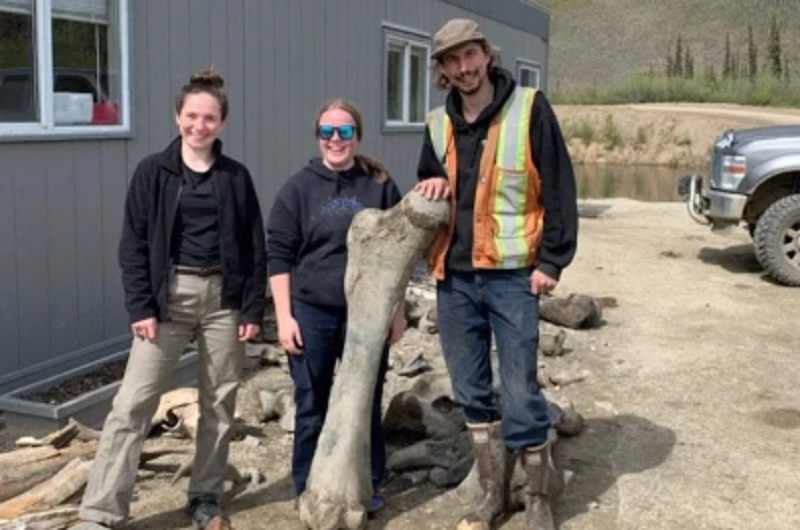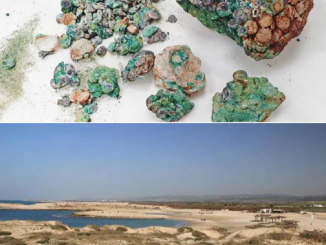Gold miners in Canada really “hit the trick” when they unearthed three 29,000-year-old ice age beasts at the same time.
According to Live Science, this remarkable paleontological discovery occurred at the Little Flake gold mine near Dawson City, Yukon, Canada. Currently, three giant, incomplete sets of remains have been handed over to the Yukon government for research. Yukon government representative, paleontologist Grant Zazula, said they were the remains of three giant woolly mammoths.

3 miners next to one of the “beast” bones they found – Photo of the Government of Yukon
Many of the bones are still connected, suggesting that the three mammoths died together in the same place they were found. They include 2 adults and 1 baby mammoth, possibly members of the same herd or family.
Three gold miners found the remains near a layer of volcanic tephra dating back about 29,000 years. Therefore, the three mammoths may have been similar in age and the deaths may have been related to the volcanic disaster. It was a harsh period, most of Canada was covered by glaciers, only the area around Dawson City today was ice-free, so it became a rich oasis for many creatures.
Woolly mammoths are believed to have moved from Alaska and Siberia to this area about 35,000-18,000 years ago, across the “Bering land bridge”. According to geological data, at that time the Bering Strait was still connected by a narrow strip of land, and many creatures – including humans – migrated along that path to the Americas.
The dry environment of that period helped the three “beast” skeletons to be very well preserved, buried by a thick layer of loess, which later froze. Often gold miners must remove this layer of frozen loess to reach the gold-filled gravel below, thus also reaching the remains of ice age creatures.
Archaeologists are at the scene and with miners continue to dig in the hope of finding more ice age “monsters” resting below.


